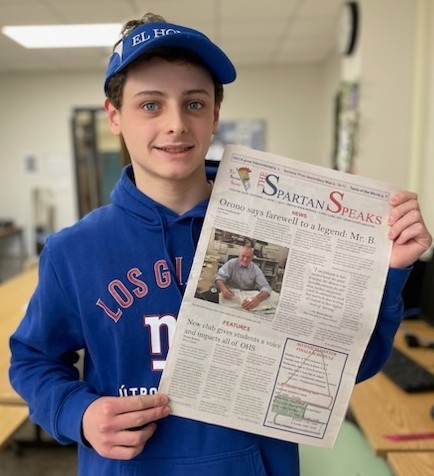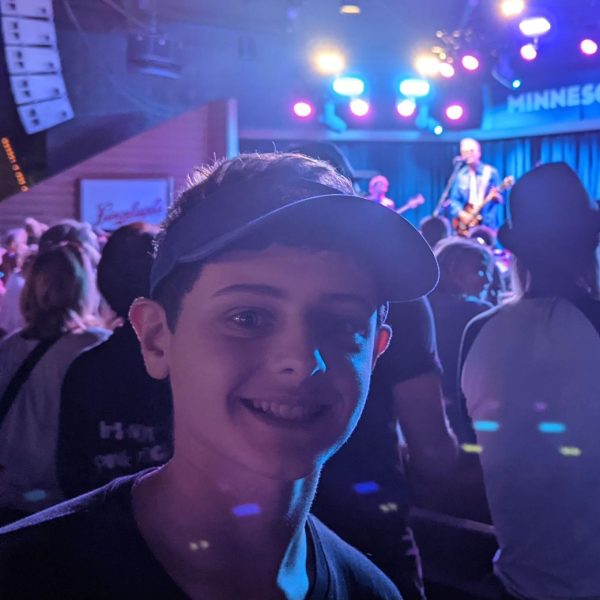Did you know that Orono’s student newspaper, The Spartan Speaks, has been around since 1952? That’s right, back then The Spartan Speaks was called The Oracle, a physical paper issued twice weekly. Read on to learn about the history and evolution of Orono’s treasured newspaper: The Spartan Speaks.
The Oracle
The first record of the school newspaper was in 1952. The paper was originally called The Oracle; Oracle meaning, something or “someone who knows a lot about a subject and can give good advice” according to the Cambridge Dictionary. One can speculate that the name had to do with our mascot, the Spartan, which is Greek in origin. Oracles were an important part of ancient Greece, as they told vital information, much like a newspaper.
The Oracle was a physical, bi-weekly paper aimed at informing the student body of the “latest styles, game scores, class gossip, local happenings and a laugh or two” writes the 1956 Orono Yearbook. It was produced using a mimeograph. A mimeograph is an old machine that replicates stencils. The paper was subscriber-based, meaning students had to pay to receive the paper.
In 1959, The Oracle became a member of the Quill and Scroll, “an international honor society for high school newspapers and the Scholastic Press Association” according to the 1959 Orono Yearbook. In 1962, the Oracle transitioned from mimeograph to print. In 1966, the Oracle began to release new editions monthly, rather than bi-weekly. 1966 was the last record of the Oracle, as the school paper ceased to exist from 1967-1970. The reasons for this disappearance remain unclear.
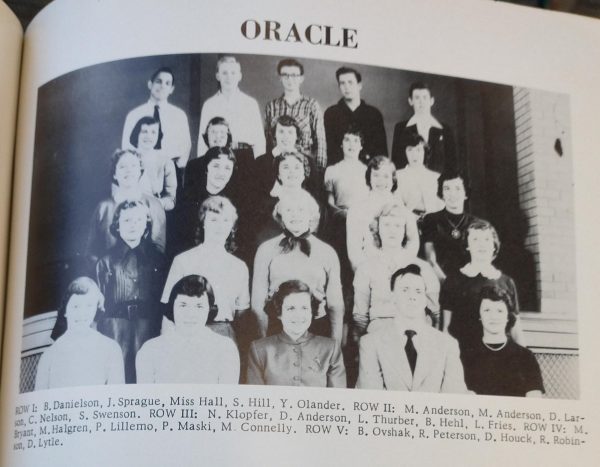
Inside the Aquarium
Inside the Aquarium (ITA) was the revival of The Oracle. “As best I remember, it was during my sophomore year (1969/70) that interest arose” writes Jeff Stempel, an original member of ITA. “We organized the paper in the summer of 1970, before Jeff, Greg, Dan, Joe, David, and I became juniors. I’m pretty sure Jeff offered to me the job of editor-in-chief, but I declined and asked to be the business manager.” writes Steve Berthene, a founding member of ITA.
ITA was issued monthly, and unlike its predecessor, it was free to all students. Originally, ITA was operated solely by students.
“I’m not even sure we had an office or meeting room on campus until much later in the history of the paper. The administration was not hostile (at least not enough to ban the paper) but it was not particularly supportive.” notes Stempel.
Following the first few issues, “the school administration decided that they should have some oversight, so Miss Nelson (primarily taught senior English) became our advisor. The school didn’t provide any funding, as I recall, they just wanted to make sure there wouldn’t be any surprises that embarrassed them” said Berthene.
You may be wondering why the paper was named Inside the Aquarium. Well, the name was “related in part to the pejorative nickname given to former principal Wendell Tollefson, known as “Guppy” based on a certain look he had (think Xi Jinping holding the “Winnie the Pooh” moniker [,] and, of course, whatever his popularity deficit with students, Mr. Tollefson’s disciplinary methods were considerably more benign than Xi’s.) […] The name choice also has a much more benign explanation in that we were hoping to have a school paper to provide greater transparency/illumination of the school (like a clear aquarium, etc.)” said Stempel.
The name was also chosen to reflect the structure of the high school, which was originally supposed to be a square with a garden in the middle that looked like the shape of an aquarium.
In 1976, ITA became an official “school activity.”
“The school board said if they wanted to keep the paper in distribution, let it become a school activity. It was agreed upon and […] a $100 budget was appropriated” writes the 1976 yearbook. In 1978, ITA was granted an official “home” to be used to create the school paper and deliver it promptly.
Throughout the years, ITA would add new columns, sections, and increase/better their coverage of all Orono events. Technology would improve over time, as the production of the paper became more computerized. The staff would usually consist of around a dozen editors, a business manager, and a faculty advisor. Miss Nelson would remain the advisor from 1971-1996.
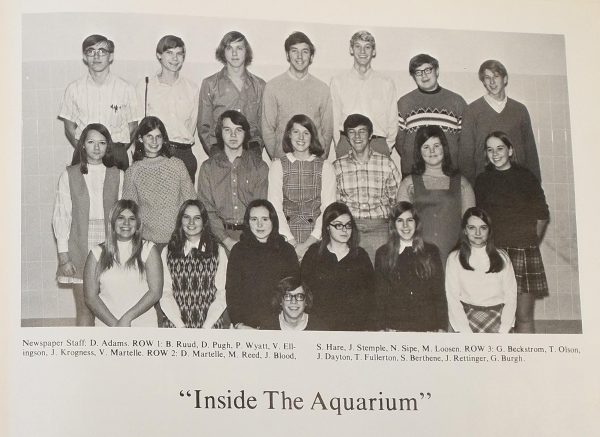
Hoi Polloi Press
ITA got a name change during the 2000-2001 school year.
“I remember we decided the name needed an update because it no longer made sense,” said Amy Ensign, Editor-in-Chief of the Hoi Polloi Press during the 2000-2001 school year, “The original name came from the shape of the original high school’s building shape; I guess they thought it looked like an aquarium. We attempted to do a vote on the new name. I believe that’s how we landed at Hoi Polloi Press.”
Although the name had changed, the newspaper stayed largely the same as it had in previous years.
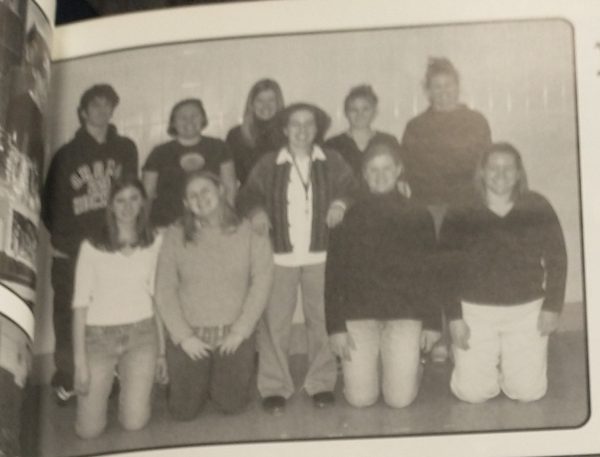
The Spartan Speaks
The new name, Hoi Polloi Press, would only last for one school year.
“I didn’t think that reflected the essence of the school newspaper or the students at the high School,” said Ms. Herring, former advisor of The Spartan Speaks. Ms. Herring was the advisor for the newspaper from 2001-2003, and later from 2007-2022. “Therefore, my idea in the fall of 2001 […] was to call it The Spartan Speaks as a play on words, the goal being that the newspaper would be the voice of the students, the Spartans.”
In 2010, The Spartan Speaks gained a digital presence, with the addition of its new website, spartanspeaks.com, while still providing students with a physical paper that would come “out at least four times a year,” states Ms. Herring.
However, as time went on, fewer and fewer students were paying attention to the physical paper, “unfortunately, not as many people read it as I would have hoped” notes Emma VandenEinde, a former Spartan Speaks contributor and 2018 OHS graduate. Due to the lack of engagement with the physical paper, it was discontinued in the fall of 2019. From then on, The Spartan Speaks became fully digital, informing students on all of the latest happenings at Orono from our website only.
In 2020, staff member Megan Fritz created The Spartan Speaks Interactive Course Guide. The guide serves as a catalog of all courses offered at OHS and is used by students at OHS every year when they sign up for classes for their next school year. This guide is updated by The Spartan Speaks each year to provide the most up-to-date information for all Orono students.
In 2024, The Spartan Speaks added many new features, such as the ability to view the daily lunch and breakfast menus on our homepage, among other things. In addition, all upcoming and completed Orono sports games became viewable on the Sports page of the website.
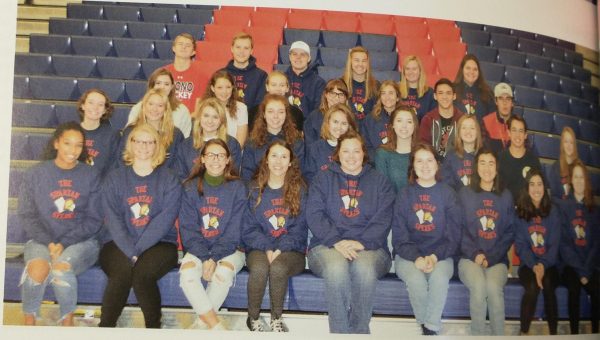
How has The Spartan Speaks Impacted its Staff Members?
The Spartan Speaks has had a profound influence on all of its staff members. “I learned a lot of incredible skills during my time there and being a part of the newspaper is probably one of my fondest memories from my time at Orono,” said Anna Miller, Online Editor-in-Chief of The Spartan Speaks from 2015-2016.
Some staff members joined because they wanted to make a difference in the Orono community, “The Spartan Speaks allowed me to share stories around mental health, which made me feel like I was making a difference,” said Tillie Hogenson, former Health and Wellness Editor from 2019-2021.
Some staff members even went on to become English teachers and advise school newspapers in other schools, “I went on to be a newspaper advisor in my early years of teaching at Red Lake High School and in Baltimore at Northwestern High School. […] My students wrote meaningful and important stories during those years (and fun ones, too!),” said Amy Ensign.
What has The Spartan Speaks meant for the Orono Community?
The Spartan Speaks has been a staple of Orono High School since its inception, serving and informing the community on all of the latest happenings. Students have relied on The Spartan Speaks since its establishment in order to stay up to date on all of the most recent news. The Spartan Speaks has and is committed to bringing Orono students the latest scoops on all things Orono and will remain dedicated to fulfilling this purpose.
We would like to thank Russell Packard, Jeff Stempel, Steve Berthene, Amy, Ensign, Ms. Herring, Emma VandenEinde, Anna Miller, Tillie Hogenson, and Mrs. Wikman for making this story possible.



















































